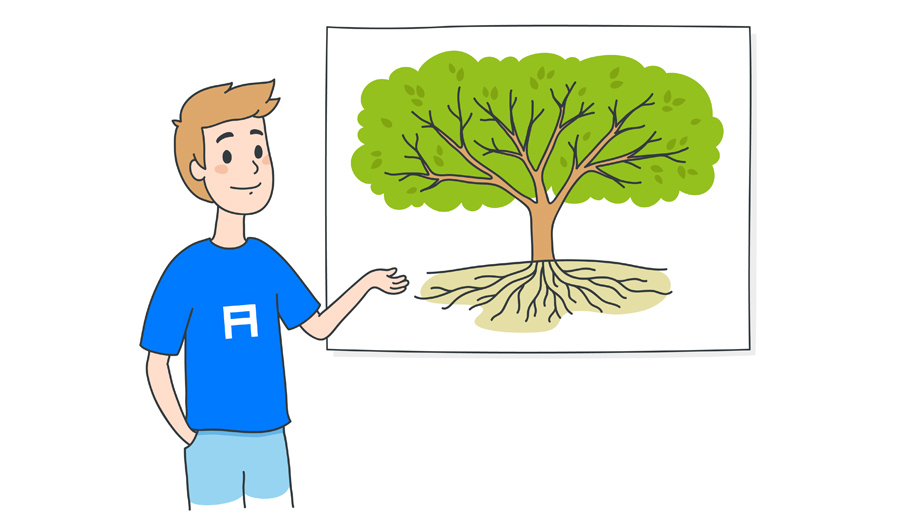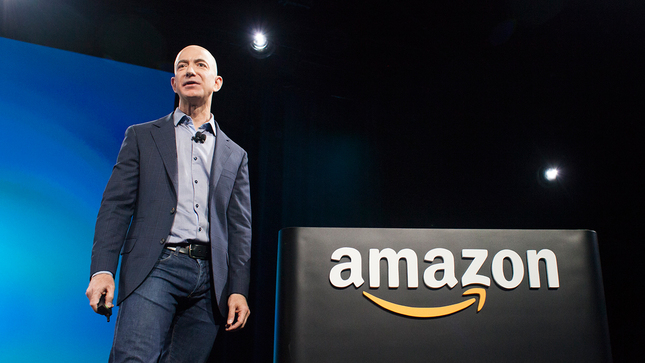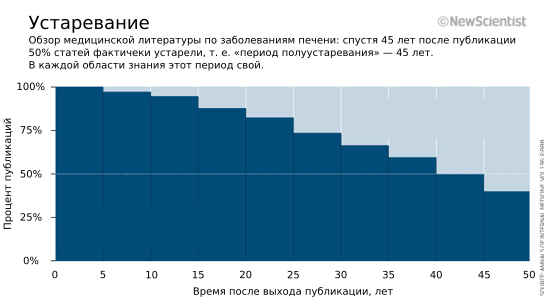What you need to be able to not be afraid of losing your job
The method used by Jeff Bezos, Warren Buffett and Ilon Musk

Jeff Bezos is often asked a question that we all have to ask ourselves: “What will change in the next 10 years?”
This is a difficult question: the world is changing very quickly, and the decisions taken today determine our fate.
')
If you make a wrong choice, you can end up on a sinking ship, watching how the industry in which you decided to work went completely bankrupt, and the skills acquired over many years are hopelessly outdated. At one time, millions of people found themselves in this position, from journalists to financial analysts.
But if you find the right solution, you will secure a calm future for life. For example, the best programmers in the field of artificial intelligence earn no less than the superstars of the US National Football League . Suddenly it turned out that the skills, the first of which were devoted to the acquisition of many years, have become incredibly valuable.
At the same time, both the mentioned programmers and those whose skills were depreciated could have spent the same time on training and become professionals in their field. But they chose different areas of work and went in completely different ways.
Over the past few years, I met people who had dedicated their careers to the skillful prediction of the future: they invested money based on their predictions, and year after year they received a solid payoff. I noticed that they have something in common - a seemingly contradictory approach to investing money and time, which turns upside down the usual ideas. In this article, I’ll tell you how to secure a future for yourself using methods that billionaire entrepreneurs and investors have achieved with their minds, such as Jeff Bezos, Ray Dalyo, Howard Marks and Warren Buffet.
Transferred to Alconost
“What will change in the future?” Is the wrong question.

As I said, Jeff Bezos is often asked: “What will change in the next 10 years?” But this is a completely wrong question. See how Jeff rethinks him (my selection):
This is a very interesting question, it is often asked - but it is almost never asked: “What will NOT CHANGE in the next 10 years?”
And I propose to think that the second question is in fact more important - after all, that over time remains unchanged, you can build a business strategy.
He then goes on to explain how Amazon achieved success by focusing on the second question (highlighting mine):
In the retail business, it is obvious that customers want low prices, and I know that this will be the case in 10 years. Buyers want fast delivery, they want a wide selection. It’s impossible to imagine that in 10 years a client will come to me and say: “Listen, Jeff, I, of course, love the Amazon, but I would have a little higher prices”, or: “You have everything cool, but I would like delivery is not as fast ". It sounds crazy, right?
Therefore, we are putting efforts here and developing in these areas: we know that today’s investment will delight our customers in 10 years. If you find something that does not change in the long term, you can afford to seriously invest in it.
I remember when I first read this, many thoughts filled my head. This approach seemed to me both obvious and completely illogical. On the one hand, I thought: “There is definitely something in this! Why not just focus on the fact that you are definitely not depreciating, and not to speculate? ”On the other hand, Bezos’s answer contradicts the usual understanding of the course of events and shakes him up. Usually we plan the future as if playing roulette:
- We are trying to determine what will become important in the future (for example, artificial intelligence, virtual reality, blockchain, synthetic biology, nanotechnology).
- We choose something from this, invest our resources and improve ourselves.
- We hope that the topic “shoots”, that we have chosen the right time, and therefore we will benefit.
Yes, sometimes it works, but this approach cannot boast with reliability. I would not advise my children to do this. In 2012, the Kaufman Foundation conducted a study that showed that “the venture capital industry did not return investments made since 1997”. And if you remove a couple of companies such as Uber, Amazon, Google and Facebook, the yield will be terrible. In other words, the chances that the company in which you invest, or which you founded, or in which you work among the first employees, will become a “unicorn”, are not far from the chances of winning the lottery. Today, only 200 startups are valued at $ 1 billion - yes, the chance to get struck by lightning is ten times more !
Why not focus on more defined and reliable trends?
Why the prediction of the future does not work
"You can not predict - you can prepare."
- Howard Marks
Howard Marks, a billionaire entrepreneur and investor, manages the investment firm Oaktree Capital, which has $ 100 billion in management, is one of the largest hedge funds in the world. Every year, Marx writes a letter to shareholders, which then widely diverges around the world. In one of these messages, he showed why investing in future trends is not always wise:
- In seemingly profitable industries, there will be the greatest competition, making them less profitable. Marx writes: “The best investments are where you don’t want to invest. Most people have a sense of confidence in investments, the main premise of which is widely accepted, current indicators are positive, and the prospects are assessed as rosy - but such assets are not cheap to buy. The opportunity to take something cheaply is more likely to be found in conflicting, controversial areas that are not pinned with great hopes and which now have not the best performance.
- Luck and chance are essential factors that cannot be avoided. “It’s not at all necessary that even the“ right ”decisions will turn out to be successful, because every time you have to predict the future, and even the most reasonable assumptions may not be justified due to some accident,” says Marx. Some accidents so strongly influence the course of events that they completely change everything and for everyone. Nassim Taleb calls such events "black swans." (A great example is the 2008 financial crisis.)
- Constantly predicting correctly is much more difficult than it may seem. “To consistently make decisions that correctly take into account all the facts and considerations relating to them (that is, to predict correctly) is difficult,” Marx notes with the modesty inherent in many of the world's best investors. Independently making his billionth state Ray Dalio in the first paragraph of his new book shows how difficult it is to engage in investments: “Before sharing my own thoughts with you, I want to make it clear that I’m dumb as a cork and know little about what I need to know.”
- Even if you make a correct prediction, you are likely to make a mistake with time. Marx says: “Even well-founded decisions, which in the end turn out to be correct, rarely prove their correctness quickly enough. This is due to the fact that uncertainty is peculiar not only to the events in the future, but also to the time of their occurrence. ” And the problem is that the wrong time is actually identical to making the wrong decision.
The field of artificial intelligence is a clear example of the argument of Marx. Today, investing in artificial intelligence seems like a good choice, but this has not always been the case. In 1974–1980 and 1987–1993 This industry has experienced what is now called "AI cold winters." It was a time when the charm of AI faded away, and as a result, trust and funding disappeared. Talented young programmers massively left this sphere. Many of those who are successful in this area today are those who survived these winters and continued to move forward, even when it did not seem reasonable. Today, those who want to break into the world of AI have to compete with a lot of the smartest people from around the world.
I want to say that to understand which field of knowledge will be popular in 20 years is not as easy as it seems. And the prediction of the consequences of the third, fourth and fifth orders is almost impossible at all. Could anyone in the early 1900s predict that the invention of the car will ultimately lead to the irregular growth of the suburbs, the development of the hotel industry (in the US, because of the federal highway network) and the insurance industry.
Please note that Warren Buffet - the best investor in history - is not invested in the hottest technology startups. Instead, in his career he relied on companies built on principles that do not change or change very slowly. This allows Buffett to invest in companies for the long term. For decades, he had a stake in companies such as Geico, Coca-Cola and American Express.
So, if the prediction of the future is not what we are looking for, what do we need?
Meet the "trunk method"
"The main thing is not the ability to predict rain, but the ability to build an ark."
- Warren Buffet
The basis of the methods used by Buffett, Dalio, Marx, Taleb and Bezos is a general principle: you need to focus on what is almost guaranteed to retain its value in the future, whatever happens.
Jeff Bezos talks about how to focus on the unchanging desires of customers and build on this solid foundation for the company. I would take the next step: an effective way to secure your future is to focus on the knowledge that will always be needed . I call this approach the “trunk method.”
Some forms of knowledge emerge quickly and just as quickly become obsolete. Others remain relevant for a long time. In the article Why to be great is much more difficult than it seems, I share thoughts about how the rate of information obsolescence increases.
One study , for example, found that the "half-life" of knowledge about cirrhosis and hepatitis is 45 years. That is, if you take a 70-year-old liver specialist who did not support the relevance of his skills, then the chance to get incorrect information from such a specialist is 50%. The half-period of engineering knowledge declined from 35 years in 1930 to 10 years in 1960.

Source: New Scientist
So what is the difference between knowledge that is relatively quickly out of date, from long-lived knowledge?
Generally speaking, “transitional”, or rapidly losing relevance of knowledge, is just what helps us navigate in a specific environment (for example, in such a specialized area of knowledge as liver disease). And the “pillars”, that is, for a long time not losing the relevance of knowledge, are based on fundamental principles and mental models that can be applied in various contexts, including those that cannot be predicted today.
I will explain. As mentioned in the article How Ilona Mask manages to learn faster and better than others , when most people think about knowledge, they imagine a horizontal landscape of knowledge on various topics . The problem here is that if you look in one dimension, you can skip important links.

Often overlooked is that knowledge has a vertical dimension. Outstanding thinkers and figures, as far as I can tell, see the world around it in this very context. The subjects that we study are interconnected by deeper principles and mental models .

In the example in the figure, studying universal mental models of the science of networks applicable to any network, one can easily understand the specific patterns of how the brain works or how social networks are arranged.
And here not to manage one level of depth is a multilevel designs. Responding to questions from users of Reddit , Ilon Mask explained it as follows:
It is important to consider knowledge as a kind of semantic tree: first you need to understand the fundamental principles, that is, the trunk and large branches, and only then move on to the leaves - otherwise the latter will not hold on to anything.
The figure is an example of the visualization of such a semantic tree.

Using the trunk method, you focus on mastering the fundamental mental models, the basic principles , and only then go on to the "leaves." In this way, you are building a more sustainable “tree of knowledge” with a greater potential of adaptability - which means you are ensuring a stable career. Every winter, trees shed their leaves, but at the same time dozens (and sometimes hundreds) of years grow - because they have strong trunks and roots.
As an example, take the topic of experiments. For success at the individual, corporate, and community levels, it is important to understand the 10,000 rule of thumb rule . If you try to learn how to experiment using the opposite approach discussed — let's call it the “leaf method,” you first need to focus on quickly understanding how to conduct A / B testing on a website. The “trunk method”, on the other hand, requires first to understand what a scientific approach is (and these are controlled experiments, peer-reviewed journals, blinding and randomization, falsifiability, placebo control, double blinding, computer modeling and meta-analysis). Having understood the several basic principles that make up the scientific approach, you can create thousands of experiments in all spheres of life. With the advent of new techniques and software, you can quickly understand their significance and start using them. And when the tools become obsolete, you will still have a “trunk of knowledge”, on which new “branches” and “leaves” will grow. Most of the success that I had as a writer, I attribute to the scientific approach to the creation of ideas.
Here’s another example: I’m obsessed with a healthy lifestyle, so I’ve picked up tips on how to take micronutrients, interval training, short-term fasting, taking cold showers and baths. And this is fine, but more fundamentally for my health - knowledge of the fundamental principle of post-traumatic growth: all of the above techniques can be inferred from the understanding that body systems grow after exposure to stress and with sufficient time for recovery.
In short, the “trunk method” helps in the following:
- Build a tree of knowledge that will never lose relevance. Winston Churchill once said: "The further you look back, the more you can see ahead." Recently, this phenomenon is called the Lindy effect : “The predicted lifespan of“ non-perishable ”objects (such as technologies and ideas, for example) is generally proportional to their current age, therefore their expected lifespan increases with each new second of their existence.” From this follows the principle concerning the obsolescence of information: “the more you focus on fundamental knowledge, the more your“ tree of knowledge ”will live.”
- Quickly adapt to any changes and thrive. Fundamental mental models are by their nature such that they are found everywhere. Therefore, when you move to a new area for yourself, you will have an advantage, because you will immediately recognize already familiar principles for yourself.
- It is better to understand what is happening and what it means. As a professional chess player can look at several moves ahead , so mental models will help put what is happening in context, react accordingly and think about your actions in advance.
- Reduce the risk of investing in an area that does not "shoot." In this article, I do not propose to completely ignore the future. I am trying to say that the understanding of trends should be balanced by what will never change: fundamental principles and mental models. In his book Anti-frailty, Nassim Taleb, a very successful investor who, according to rumors, costs hundreds of millions of dollars, offers an approach to investing resources that allows you to get maximum profitability and eliminate losses . He calls this the “boom strategy”: you need to create a portfolio of extremes (the most secure assets + high-risk assets), rather than collecting a bit of everything.

Source: Nassim Taleb
The “trunk method” works the same as Taleb's “barbell strategy”. By forming a stable base of risk-free knowledge, we reduce the likelihood of a pessimistic outcome and at the same time provide greater flexibility and confidence to make risky bets for the future that can “shoot” well. Therefore, I argue that the use of the “trunk method” is one of the basic skills that anyone who wants to determine his own future should master.
About the translator
The article is translated in Alconost.
Alconost is engaged in the localization of games , applications and sites in 68 languages. Language translators, linguistic testing, cloud platform with API, continuous localization, 24/7 project managers, any formats of string resources.
We also make advertising and training videos - for websites selling, image, advertising, training, teasers, expliners, trailers for Google Play and the App Store.
Read more: https://alconost.com
Source: https://habr.com/ru/post/345762/
All Articles